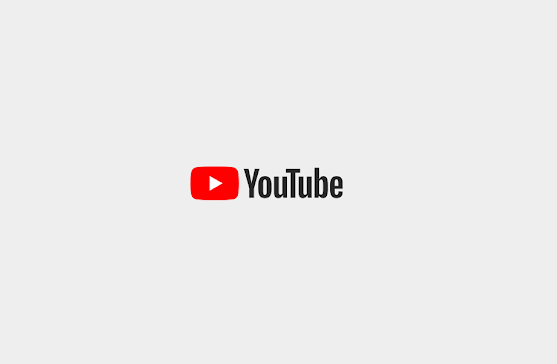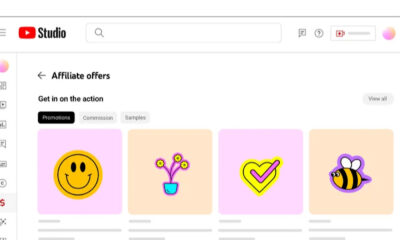SOCIAL
Google’s Removed Over 50k YouTube Channels Linked to Influence Operations Originating from China

This seems to be a significant, yet largely buried element within Google’s TAG Bulletin reports, which provide an overview of all of the coordinated influence operations that its team has detected and shut down over time.
As we reported back in May, at the time of Google’s Q1 TAG Bulletin, Google removed more 31,000 YouTube channels linked to Chinese-based influence operations between July last year and March 2022, a huge amount, which far outweighed any other element.
And today, Google has shared its Q2 Tag Bulletin, which, along with its various efforts to combat Russian-backed misinformation efforts about the invasion of Ukraine, also details that it shut down another 7,169 YouTube channels linked back to China in the last three months.
For comparison, Google removed 231 YouTube channels, in total, in connection to the Ukraine conflict.
As explained by Google:
“These channels mostly uploaded spammy content in Chinese about music, entertainment, and lifestyle. A very small subset uploaded content in Chinese and English about China and U.S. foreign affairs.
Which is the explanation Google has provided for all of these removals, a templated, and somewhat vague summary of what’s going on with these channels.
So what is going on, exactly?
There’s not a lot of detail provided, but it seems that the main purpose of these channels is to first build an audience in the app by posting engaging, light content, which grabs viewer attention. The channels then eventually use that reach to sprinkle in some pro-China sentiment, in order to seed such among broader audiences.
That then enables the CCP, and/or related groups, to potentially sway public opinion through subtle means, by gently nudging these viewers towards a more positive view of China’s activities.
And the scale of the operation is significant – in total, over the past year, Google has now detected and removed more than 50,000 YouTube channels (not individual videos, mind you, channels) connected to this effort.
That’s a lot, and if you look at the data, the program seems to have ramped up significantly this year, which likely suggests that whoever is behind it sees YouTube as a powerful vector for influence.
The data further underlines the importance of social platforms taking proactive, definitive steps to stop such programs before they can gain traction, while also pointing to how state-based actors are looking to utilize the scale of social networks to influence global opinion.
Which is also a concern linked to the rise of TikTok, with many security experts warning of the potential dangers of the Chinese-owned app gathering information and/or enabling pro-China narratives to proliferate.
Indeed, TikTok has come under scrutiny on several occasions over its perceived efforts to suppress anti-China content, and with recent analysis also showing that the app is becoming a key news and information resource for younger users, that may well become a bigger issue over time.
Add to this the fact that the Chinese Government continues to clash with other world leaders, on various fronts, and there’s clearly reason for some concern there.
And with pro-China groups also looking to infiltrate YouTube at this scale, there does appear to be some important trends emerging within the broader flow of news and information online.
We’ve asked Google for more information on exactly what’s going on with these YouTube removals, and we’ll add to this story if/when we hear back.
UPDATE: Google has referred us to this Twitter thread, on a China-linked group named DragonBridge, for more context on the removals.
SOCIAL
Snapchat Explores New Messaging Retention Feature: A Game-Changer or Risky Move?

In a recent announcement, Snapchat revealed a groundbreaking update that challenges its traditional design ethos. The platform is experimenting with an option that allows users to defy the 24-hour auto-delete rule, a feature synonymous with Snapchat’s ephemeral messaging model.
The proposed change aims to introduce a “Never delete” option in messaging retention settings, aligning Snapchat more closely with conventional messaging apps. While this move may blur Snapchat’s distinctive selling point, Snap appears convinced of its necessity.
According to Snap, the decision stems from user feedback and a commitment to innovation based on user needs. The company aims to provide greater flexibility and control over conversations, catering to the preferences of its community.
Currently undergoing trials in select markets, the new feature empowers users to adjust retention settings on a conversation-by-conversation basis. Flexibility remains paramount, with participants able to modify settings within chats and receive in-chat notifications to ensure transparency.
Snapchat underscores that the default auto-delete feature will persist, reinforcing its design philosophy centered on ephemerality. However, with the app gaining traction as a primary messaging platform, the option offers users a means to preserve longer chat histories.
The update marks a pivotal moment for Snapchat, renowned for its disappearing message premise, especially popular among younger demographics. Retaining this focus has been pivotal to Snapchat’s identity, but the shift suggests a broader strategy aimed at diversifying its user base.
This strategy may appeal particularly to older demographics, potentially extending Snapchat’s relevance as users age. By emulating features of conventional messaging platforms, Snapchat seeks to enhance its appeal and broaden its reach.
Yet, the introduction of message retention poses questions about Snapchat’s uniqueness. While addressing user demands, the risk of diluting Snapchat’s distinctiveness looms large.
As Snapchat ventures into uncharted territory, the outcome of this experiment remains uncertain. Will message retention propel Snapchat to new heights, or will it compromise the platform’s uniqueness?
Only time will tell.
SOCIAL
Catering to specific audience boosts your business, says accountant turned coach

While it is tempting to try to appeal to a broad audience, the founder of alcohol-free coaching service Just the Tonic, Sandra Parker, believes the best thing you can do for your business is focus on your niche. Here’s how she did just that.
When running a business, reaching out to as many clients as possible can be tempting. But it also risks making your marketing “too generic,” warns Sandra Parker, the founder of Just The Tonic Coaching.
“From the very start of my business, I knew exactly who I could help and who I couldn’t,” Parker told My Biggest Lessons.
Parker struggled with alcohol dependence as a young professional. Today, her business targets high-achieving individuals who face challenges similar to those she had early in her career.
“I understand their frustrations, I understand their fears, and I understand their coping mechanisms and the stories they’re telling themselves,” Parker said. “Because of that, I’m able to market very effectively, to speak in a language that they understand, and am able to reach them.”Â
“I believe that it’s really important that you know exactly who your customer or your client is, and you target them, and you resist the temptation to make your marketing too generic to try and reach everyone,” she explained.
“If you speak specifically to your target clients, you will reach them, and I believe that’s the way that you’re going to be more successful.
Watch the video for more of Sandra Parker’s biggest lessons.
SOCIAL
Instagram Tests Live-Stream Games to Enhance Engagement

Instagram’s testing out some new options to help spice up your live-streams in the app, with some live broadcasters now able to select a game that they can play with viewers in-stream.
As you can see in these example screens, posted by Ahmed Ghanem, some creators now have the option to play either “This or That”, a question and answer prompt that you can share with your viewers, or “Trivia”, to generate more engagement within your IG live-streams.
That could be a simple way to spark more conversation and interaction, which could then lead into further engagement opportunities from your live audience.
Meta’s been exploring more ways to make live-streaming a bigger consideration for IG creators, with a view to live-streams potentially catching on with more users.
That includes the gradual expansion of its “Stars” live-stream donation program, giving more creators in more regions a means to accept donations from live-stream viewers, while back in December, Instagram also added some new options to make it easier to go live using third-party tools via desktop PCs.
Live streaming has been a major shift in China, where shopping live-streams, in particular, have led to massive opportunities for streaming platforms. They haven’t caught on in the same way in Western regions, but as TikTok and YouTube look to push live-stream adoption, there is still a chance that they will become a much bigger element in future.
Which is why IG is also trying to stay in touch, and add more ways for its creators to engage via streams. Live-stream games is another element within this, which could make this a better community-building, and potentially sales-driving option.
We’ve asked Instagram for more information on this test, and we’ll update this post if/when we hear back.
-
SEARCHENGINES6 days ago
Daily Search Forum Recap: April 19, 2024
-

 WORDPRESS7 days ago
WORDPRESS7 days agoHow to Make $5000 of Passive Income Every Month in WordPress
-

 WORDPRESS6 days ago
WORDPRESS6 days ago13 Best HubSpot Alternatives for 2024 (Free + Paid)
-

 MARKETING6 days ago
MARKETING6 days agoBattling for Attention in the 2024 Election Year Media Frenzy
-

 WORDPRESS6 days ago
WORDPRESS6 days ago7 Best WooCommerce Points and Rewards Plugins (Free & Paid)
-

 AFFILIATE MARKETING7 days ago
AFFILIATE MARKETING7 days agoAI Will Transform the Workplace. Here’s How HR Can Prepare for It.
-

 MARKETING5 days ago
MARKETING5 days agoAdvertising in local markets: A playbook for success
-

 SEO6 days ago
SEO6 days agoGoogle Answers Whether Having Two Sites Affects Rankings
















You must be logged in to post a comment Login